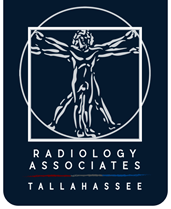PET/CT Imaging
Positron emission tomography, also called PET imaging or a PET scan, is a type of nuclear medicine imaging. PET uses small amounts of radioactive materials called radiotracers, a special camera and a computer to help evaluate your organ and tissue functions. By identifying body changes at the cellular level, PET may detect the early onset of disease before it is evident on other imaging tests.
Learn More About PET/CT Imaging
A positron emission tomography (PET) scan is a branch of medical imaging that uses a small amount of radioactive drug to diagnose and determine the severity of a variety of diseases, including many types of cancers, heart disease, gastrointestinal, endocrine, neurological disorders and other abnormalities within the body. Because nuclear medicine procedures are able to pinpoint molecular activity within the body, they offer the potential to identify disease in its earliest stages as well as a patient’s immediate response to therapeutic interventions.
At Radiology Associates of Tallahassee, our nuclear medicine images can be superimposed with computed tomography (CT) to produce special views, a practice known as image fusion or co-registration. These views allow the information from two different exams to be correlated and interpreted on one image, leading to more precise information and accurate diagnoses.
Nuclear medicine imaging procedures are noninvasive and, with the exception of intravenous injections, are usually painless medical tests that help physicians diagnose and evaluate medical conditions. These imaging scans use radioactive materials called radiopharmaceuticals or radiotracers.
In preparation for this procedure we ask that you have nothing to eat 6 hours prior to this exam. You may have water (no coffee, no flavored water). We also ask that you stop all diabetic medications for 4 hours prior to exam. No cough syrups, cough drops or hard candy. A high protein, low carbohydrate diet is recommended 24 hours before exam. Please avoid strenuous physical exercise 24 hours prior to exam. Our scan room maintains a temperature of 70 degrees; it may be a good idea to dress warmly. You will not need to change into a gown.
One of our board-certified Radiologists will interpret your exam and send a report to your physician within 5 business days. Contact your referring physician for any information pertaining to the findings.
Typically your referring physician will schedule an appointment for you. If you have been asked to schedule the appointment yourself, please have your physician’s order and any pre-authorization information required by your insurance or health plan provider in hand, and call 850-878-4127.
Except for intravenous injections, most nuclear medicine procedures are painless and are rarely associated with significant discomfort or side effects.
It is important that you remain still while the images are being recorded. Though nuclear imaging itself causes no pain, there may be some discomfort from having to remain still or to stay in one particular position during imaging. Unless your physician tells you otherwise, you may resume your normal activities after your nuclear medicine scan. If any special instructions are necessary, you will be informed by a technologist, nurse or physician before you leave the nuclear medicine department.
Nuclear medicine examinations provide unique information—including details on both function and anatomic structure of the body that is often unattainable using other imaging procedures.
Because the doses of radiotracer administered are small, diagnostic nuclear medicine procedures result in relatively low radiation exposure to the patient, acceptable for diagnostic exams. Thus, the radiation risk is very low compared with the potential benefits.
Nuclear medicine diagnostic procedures have been used for more than five decades, and there are no known long-term adverse effects from such low-dose exposure. The risks of the treatment are always weighed against the potential benefits for nuclear medicine therapeutic procedures. You will be informed of all significant risks prior to the treatment and have an opportunity to ask questions
For more information on this or other procedures, please visit radiologyinfo.org
